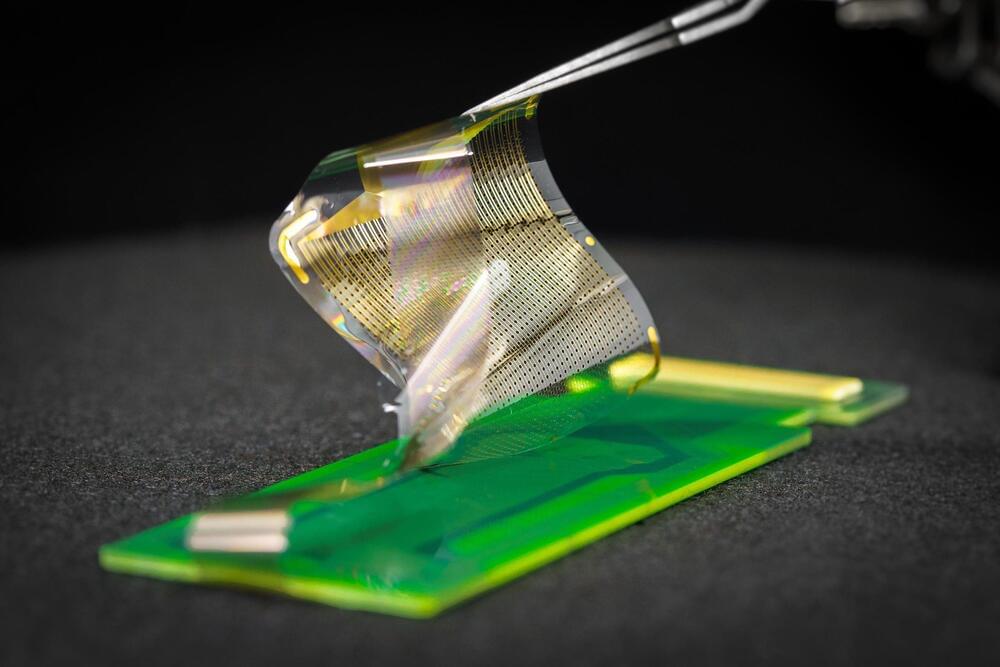Jan 21, 2022
Meta’s new learning algorithm can teach AI to multi-task
Posted by Dan Kummer in categories: information science, robotics/AI
The single technique for teaching neural networks multiple skills is a step towards general-purpose AI.
The single technique for teaching neural networks multiple skills is a step towards general-purpose AI.
A giant 18-wheel transport truck is barreling down a multi-lane Texas highway, and there is no one behind the wheel.
The futuristic idea may seem surreal, but it is being tested in this vast southern US state, which has become the epicenter of a rapidly developing self-driving vehicle industry.
Before driverless trucks are allowed onto roads and highways, however, multiple tests must still be conducted to ensure they are safe.
‘Geometric frustration’ can cause the electrons in materials with atoms arranged in a triangular pattern to organize in three competing ways simultaneously, reveals a new computational study led by researchers at the Flatiron Institute.
Materials that look like mosaics of triangular tiles at the atomic level sometimes have paradoxical properties, and quantum physicists have finally found out why.
Using a combination of cutting-edge computational techniques, the scientists found that under special conditions, these triangular-patterned materials can end up in a mashup of three different phases at the same time. The competing phases overlap, with each wrestling for dominance. As a result, the material counterintuitively becomes more ordered when heated up, the scientists reported in Physical Review X.
Summary: The body relies on multiple maps based on the choice of the motor system.
Source: Tohoku University.
Our brain maps out our body to facilitate accurate motor control; disorders of this body map result in motor deficits. For a century, the body map has been thought to have applied to all types of motor actions. Yet scientists have begun to query how the body map operates when executing different motor actions, such as moving your eyes and hands together.
An experiment, performed by Istituto Nazionale di Ricerca Metrologica (INRIM) on 200 km of the Italian Quantum Backbone, in collaboration with Toshiba Europe, shows that coherent laser interferometry considerably improves the performances of quantum key distribution protocols in long-distance, real-world networks. The study has been published in Nature Communications.
Quantum Key Distribution (QKD) protocols enable cryptographic keys to be shared between distant parties with an intrinsic security guaranteed by the laws of quantum mechanics. This is made possible by the transmission of single photons, the elementary particles of which light is made of.
The interest for this subject extends well beyond the scientific community, and has now a strong strategic and commercial relevance. The European Commission, within the “European Quantum Communication Infrastructure” intitative, aims at integrating quantum key distribution technologies into specific services throughout the European Union within the next 10 years, and INRIM will take part in the design of this infrastructure with the OQTAVO project.
A UC Riverside astronomer and a group of eagle-eyed citizen scientists have discovered a giant gas planet hidden from view by typical stargazing tools.
The planet, TOI-2180 b, has the same diameter as Jupiter.
Jupiter is the largest planet in the solar system and the fifth planet from the sun. It is a gas giant with a mass greater then all of the other planets combined. Its name comes from the Roman god Jupiter.

High-resolution recordings of electrical signals from the surface of the brain could improve surgeons’ ability to remove brain tumors and treat epilepsy, and could open up new possibilities for medium-and longer-term brain-computer interfaces.
A team of engineers, surgeons, and medical researchers has published data from both humans and rats demonstrating that a new array of brain sensors can record electrical signals directly from the surface of the human brain in record-breaking detail. The new brain sensors feature densely packed grids of either 1,024 or 2,048 embedded electrocorticography (ECoG) sensors. The paper was published by the journal Science Translational Medicine on January 19, 2022.
Continue reading “Human Brain Signals Recorded in Record-Breaking Resolution” »
A surprising property of how resonant photons interact with an absorbing medium has been uncovered by physicists in Canada. They say they have found that even photons passing straight through the medium energize atoms within it, causing atoms to spend nearly as much time in their excited states as those that have absorbed photons. They see their result as a challenge to theorists trying to describe how light interacts with matter quantum mechanically.
Aephraim Steinberg and colleagues at the University of Toronto made the discovery while investigating what happens to a beam of photons passing through a cloud of atoms when the photons’ frequency is equal to that of one of the atomic transitions. Intuitively, they say, it would be expected that those photons exciting atoms within the cloud would be absorbed and then at best re-emitted in a random direction. As such, the flux of photons coming from excited atoms that are detected in the forward direction would be miniscule.
Indeed, they point out, this idea that only absorbed, or “lost”, photons contribute to the excitation springs naturally from theory that tells us the total time atoms spend in the excited state is directly proportional to the number of photons that are lost.

A team of astrophysicists has created a simulated image that shows how the Nancy Grace Roman Space Telescope could conduct a mega-exposure similar to but far larger than Hubble’s celebrated Ultra Deep Field Image. This Hubble observation transformed our view of the early universe, revealing galaxies that formed just a few hundred million years after the big bang.
“Roman has the unique ability to image very large areas of the sky, which allows us to see the environments around galaxies in the early universe,” said Nicole Drakos, a postdoctoral scholar at the University of California Santa Cruz, who led the study. “Our study helps demonstrate what a Roman ultra-deep field could tell us about the universe, while providing a tool for the scientific community to extract the most value from such a program.”
